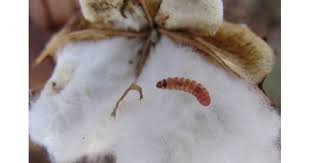India’s cotton output hits 16-year low as pink bollworm crisis deepens

India’s cotton production is projected to hit a 16-year low in 2024-25, falling to just over 294 lakh bales the weakest since 2008-09. This sharp decline, from a peak of 398 lakh bales in 2013-14, has turned India from a major exporter to a net importer, with imports expected to reach 30 lakh bales against exports of just 17 lakh bales. The major culprit is the pink bollworm (PBW), a pest that has developed resistance to the existing genetically modified (GM) Bt cotton hybrids.
These hybrids, containing the cry1Ac and cry2Ab genes, were initially effective against various pests but have now lost efficacy against PBW, a cotton-exclusive pest with a short lifecycle that accelerated resistance.
In response, Indian seed companies like Bioseed, Rasi Seeds, Ankur Seeds, and Ajeet Seeds are trialing new GM cotton hybrids with alternative Bt genes such as cry8Ea1, cry1c, and cry2Aa. These trials, governed by strict biosafety and regulatory norms, are at various early stages. However, India’s regulatory environment remains sluggish, with no new GM crop approved since 2006.
Alarmed by the production crisis, the government announced a five-year ‘Mission for Cotton Productivity’ in recent Union Budget to support farmers with advanced science and technology. With India’s textile industry dependent on cotton, the urgency to combat PBW and modernise seed technologies is growing louder amidst calls for regulatory reform and proactive biotech adoption.
